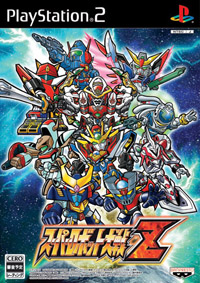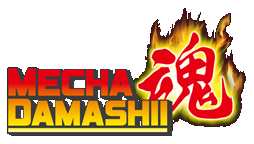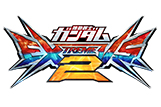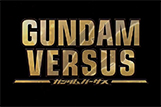Reviews: Super Robot Wars Z (9/10)
Posted on : 20-09-2009 | By : Cacophanus | In : Reviews
Hardware: PlayStation 2
6
 To the uninitiated the Super Robot Wars games appear to be a terrifying endeavour. Language barrier aside there is an immense cultural chasm present for anyone that didn’t grow up watching anime in Japan as a child. Half a century of mechanical nuance to be exact. All this has very interesting functional ramifications as Super Robot Wars Z is a turn based strategy game, much like chess in fact. Except it’s chess with close to a thousand possible pieces, almost all of which are unique, with gaming idiosyncrasies borne out of the parent anime series that birthed them. Daunting doesn’t quite cover it really.
To the uninitiated the Super Robot Wars games appear to be a terrifying endeavour. Language barrier aside there is an immense cultural chasm present for anyone that didn’t grow up watching anime in Japan as a child. Half a century of mechanical nuance to be exact. All this has very interesting functional ramifications as Super Robot Wars Z is a turn based strategy game, much like chess in fact. Except it’s chess with close to a thousand possible pieces, almost all of which are unique, with gaming idiosyncrasies borne out of the parent anime series that birthed them. Daunting doesn’t quite cover it really.
Super Robot Wars Z is the final PlayStation 2 game in the series and unlike the Original Generation (or OG) games, Z is very much a continuation of the premise where disparate mecha from various anime series effectively high five for the win. However, despite being a follow on from the engorged excess that was Alpha 3, Z is very much a crafted game; from the pristine battle animations to the deeply layered strategy.
Before I get stuck in, it’s worth giving a mild explanation on how the strategy in most recent Super Robot Wars games works. Each mecha normally has two layers of complexity; the mecha itself with its weapons and ranges and the people that pilot them. With the latter, the pilots display their own stats that affect how the mecha operates. From accuracy to dodging, there are a number of crucial variables that incur on how a single unit operates. In addition to these stats for the pilots, you also have “seishin”. These are cards the player can use that give certain abilities during a turn. Things like 100% accuracy or a guaranteed dodge and even the ability to take almost no damage when hit. This cards aren’t free though and have to be used sparingly. Naturally, mecha and pilots can be upgraded between missions and experience garnered in a mission also pays huge dividends later on as it has a direct implications on how much damage you can incur as well as how much abuse each unit can take.
In Z all of the above is mostly true except that these aspects have been streamlined and an additional layer has been added to the strategy. Previously, you could also bunch units together into small squadrons. Normally this meant you could multiply the damage you inflicted per turn, as each unit would fire off in sequence or together. This was pretty clumsy and wasn’t actually that helpful in practice and normally resulted in a bunch of units taking a beating without you being able to do much tactically about it.
Z distils these squadrons down into three units a piece with three specific formations; tri, centre and wide. Tri is a line formation that’s able to utilise special tri attacks, centre is a triangular setup that’s better defended against wide formations as well as able to concentrate fire on one enemy at a time and wide has the team fan out, allowing them to take each of the enemy formation on individually. The new formations are now strategically crucial, as you have to place your units in relation to the formations your enemies are using. Admittedly you can change the formation per turn but you need to set these up properly otherwise it can and often does make the difference between spreading the damage across the squad or losing them entirely.
It’s amazing how much more involved Z is just by one simple layer of strategy. Gauging the effectiveness of a squad is actually quite subtle now, as it’s not just a matter of brute force that wins out. You have to temper each squad with units that work at a variety of ranges as well as cover off different types of shot type (some use actual ammunition, whereas others use energy and the latter can be renewed via supply units, the upside of using ammunition is that it’s harder to deflect with certain shielding).
Admittedly, you also still have the element where combining certain mecha together in a squad unlocks special and more potent attacks. Notably that of the mecha in Orguss, as both Kei and Olson’s mecha have an aforementioned attack where they practically high five, however this isn’t an option if you’ve placed Olson in another squad. So again, the subtlety at work here is quite profound in terms of the strategy and more importantly how much the player knows about the host work.
Now, Z wouldn’t be a Super Robot Wars game if it didn’t display wondrous battle animations for when two or more units engage in combat. Some of the previous games have set the benchmark for 2D animation in gaming and Z has simply eclipsed all of them. The animations are quite simply, exquisite. Just the clarity of the mecha themselves as well as the pilot cut-ins are leagues ahead of what has been previously seen. To the extent that many of the animations look as though they’re directly from the host anime. Even specific animated effects and stylyings from different eras are also present, so the smoke effects for Mazinger and Getter Robo look as if they’re from the 70’s whereas the LFO’s from Eureka Seven retain that contemporary Bones styling for the trapar they surf upon.
Z is by no means faultless though and this is more down to how the strategy is utilised per mission. Specifically in other games, such as XO, the primary objective for each mission is normally very awkward in terms of the mecha you have at your disposal. There’s a right and a wrong way to do the level. As the series has become more successful though, the primary objectives have become more nebulous and broader in terms of their successful criteria. This allows players who aren’t particularly strategically minded to blast through the game.
In Z the above is very much the case, however the secondary objectives can be incredibly tricky and the amount of upgrade points you get if completed successfully are reason enough to strive for them. That said, you do feel that having something a bit more challenging placed in your path would have been the better solution. As the player has already invested themselves in a thoughtful turn based strategy game, with each mission still a fairly long-winded affair, there’s very much a captive audience already. The irony is that in XO, the level of strategy wasn’t as deep as in Z but it made you use what little you had quite a bit more. This is not to say that XO is better than Z, as XO suffers from a lot more problems, but that Z misses a crucial opportunity to make the player truly tactically appreciate the units they’re using.
As such, Z comes very close to being a perfect mecha game. On the one hand you have half a century of mechanical mythology having a tangible functional purpose in the game and on the other you have the aesthetic framework to ground that like no other gaming series really can. Whilst the strategy isn’t forced upon the player there is an expectation that you know what you’re doing, that you understand what each of these magnificently imaginary machines are and that they have a unique identity given form through turn based strategy. Put simply if you’ve never played a Super Robot Wars game, then this is the one to get.
Tamashii: 9/10











For someone who cant read japanease, do you think it would take long to work out the menues?
Or does anyone know anything about an english iso patch?
There are plenty of FAQs about for the game, so the language barrier isn’t so much of an issue:
http://www.gamefaqs.com/console/ps2/game/945859.html
Another great, review. Not my cup of tea but I can see the appeal.
Any chance you could do a review of Konami’s Ring of Red? I would love to see what juicy info you could find on that game.
[…] the radar. Though this all changed when it was included in Another Century’s Episode R and Super Robot Wars Z, with it actually being integral to the narrative of the […]
[…] for Xabungle’s impact on gaming, the series also turned up in some of the Super Robot Wars Z games and Hideki Kamiya of Platinum Games is a fan of the […]
[…] l’inclusion dans des jeux comme Super Robot Wars Z et Épisode 3 d’un autre siècle aidé à ressusciter la série, suivie par un radeau de […]